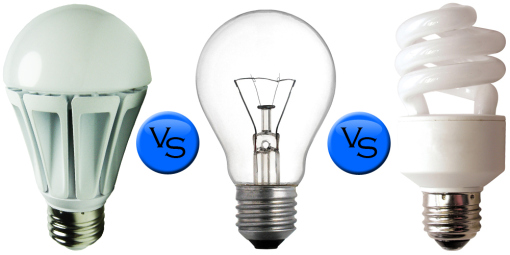Energy-saving lamps, which is also known as energy saving bulbs, fluorescent lamps, energy-saving lamp lighting refers to a whole fluorescent lamps and ballasts (Ting)which is composed of a stabilization device using energy-saving lamps and other products have a common lamp.
Energy-saving lamps and incandescent is of similar size, lamp interface and installation are the same and incandescent, so you can directly replace incandescent, to achieve the role of energy conservation. The official name of energy-saving lamps are rare earth trichromatic compact fluorescent lamps, the 1970s was born in the Netherlands, Philips.
That LED semiconductor light-emitting diode, LED energy saving lamp with high brightness white light emitting diode light source, high luminous efficiency, low power consumption, long life, easy to control, maintenance, safety and environmental protection; is a new generation of solid cold light source, light color and soft, bright, colorful, low loss, low energy consumption, environmental protection, suitable for families, shopping malls, banks, hospitals, hotels, restaurants, public places for a long time he was lighting. No flash DC, the eyes play a very good protection, is the best choice lamp, flashlight.

LED energy-saving light bulbs application features the following main aspects:
1 Voltage:. LED low voltage power supply, power supply voltage between 6-24V, varies according to different products, so it is more secure than using a high voltage power supply, especially in public places.
(2) Performance: consumption of energy compared with incandescent light efficiency reduced by 80%.
3 Applicability: small LED die each unit is 3-5mm square, it can be prepared into various shapes of devices, and for the environment variable.
4 Stability: 100,000 hours, the light fades at 50% of the original.
5 Response time: the response time of the incandescent millisecond, and the response time of LED lights is nanosecond pole.
6 environmental pollution: no harmful metal mercury.
7 Color: change the current can change color, light-emitting diodes by chemical modification methods to easily adjust the material’s band structure and band gap, to achieve multi-color light orange, red,yellow and blue. As for the red LED, as the current increases, which can turn to orange, yellow, small current, and finally to green.
8 Price:. LED’s are expensive, compared to incandescent lamps, a few LED’s price can be quite incandescent with a price, and usually each signal to be 300 to 500 diodes.
